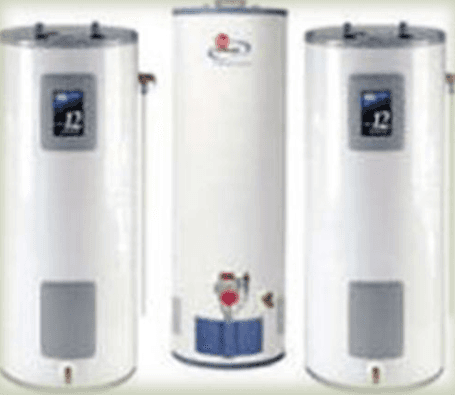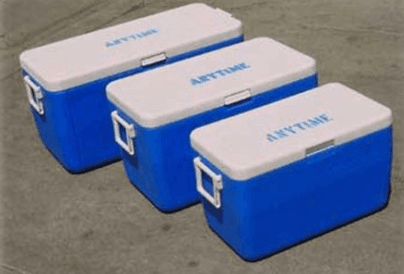You're in Good Hands

What is Spray Polyurethane Foam?
You're already familiar with it.
wherever you need the best insulation you can buy. Such as in these items.



In short, its a spray applied plastic. It comes in two forms. First is open cell which is for some specialized insulation projects. The second is a closed cell spray version (ccspf) used in all kinds of applications. Ccspf is used for insulation, air and moisture barriers, and for spray foam roofing to mention a few.
Want to know more? Read the article below from the American Society of Home Inspectors, or click on the "Modern Marvels" picture below to see what the History Channel on TV has to say about it. (It’s a youtube video so excuse the commercial at the beginning if there is one.)
Want to know more? Read the article below from the American Society of Home Inspectors, or click on the "Modern Marvels" picture below to see what the History Channel on TV has to say about it. (It’s a youtube video so excuse the commercial at the beginning if there is one.)
(From the ASHI Reporter August, 2007 Issue)
What is Spray Polyurethane Foam? | The ASHI Reporter | Inspection News & Views from the American Society of Home Inspectors
Spray polyurethane foam, commonly referred to as SPF, is a spray-applied insulating foam plastic that is installed as a liquid and then expands many times its original volume. SPF formulas can be tweaked to have many different physical properties, depending on the use desired. For example, the same basic raw materials can make an insulation foam that is semi-rigid and soft to the touch also create a high-density roofing foam that is resistant to foot traffic and water.
Specialized equipment is used to apply the SPF and extensive technical training is important in order to get the best results.
SPF is the king of building material multi-tasking. In insulation, it can provide high levels of R-value, while providing air barriers and assistance in moisture control in buildings.
In roofing, it insulates and eliminates thermal bridging through fasteners or gaps in decking, while providing a long-lasting roofing system that has a life that can be extended by re-coating an average of 10-15 years.
As a result, SPF is used in a wide variety of applications including (but not limited to): roofing; air barriers; commercial and residential insulation in walls, ceilings, attics and basements; industrial insulation such as pipes and tanks; cold storage facilities, freezers, walk-in coolers, climate-controlled buildings such as mushroom farms or produce storage; clean rooms; flotation for boats, ships, barges, floating docks and more. Higher-density SPF systems have even been used to increase the structural strength of wings on airplanes.
So what is SPF? SPF is a remarkably versatile material that provides proven solutions to a great range of challenges in the construction and manufacturing industries.
Frequently Asked Questions
These questions and answers appear on the SPFA Web site, and visitors who do not see answers to their questions in the following categories are invited to contact SPFA at 800-523-6154.
Building Envelope
Q: How does SPF reduce energy use in buildings?
A: SPF provides a continuous air barrier.
SPF prevents moisture infiltration through air leakage.
SPF minimizes dew-point problems and condensation.
SPF avoids thermal bridging.
SPF resists heat movement in all directions.
SPF provides reliable performance under varying conditions.
Q: What is the difference between a vented and unvented attic?
A: Unvented (conditioned) attics use air-impermeable insulation as a barrier to prevent moisture condensation on the underside of roof decks. Vented attics minimize condensation by allowing the escape of moisture to the exterior by air flow.
Q: If you spray the underside of a roof deck with SPF insulation, should you vent the attic?
A: No, the application of SPF insulation to the underside of the roof deck minimizes the potential for condensation. The SPF insulation develops a thermal and moisture gradient that avoids the development of dew-point conditions in the attic. Because of this, moisture won’t condense or accumulate and, therefore, does not need to be vented to the exterior.
Q: Do you need a vapor retarder or a vapor barrier with SPF insulation?
A: It depends on the use of the building, the climate and the materials of construction. In normal occupancies and moderate climates, SPF insulation typically does not require a vapor retarder. Extremes of climate and building use may require vapor retarders/ barriers. Check with your design professional for specific recommendations and refer to SPFA technical document AY 118, Moisture Vapor Transmission, for further information.
Q: Is SPF a good soundproofing material?
A: Both low- and medium (2lb/cubic/ft)-density SPF effectively reduce noise from outside sources by sealing cracks and gaps that allow sound to travel through the walls, floors and ceilings into the building. They are less effective against noise caused by vibration.
Q: What is the difference between low-density, open-cell SPF and medium-density, closed-cell SPF?
A: 1/2 lb. Spray Polyurethane Foam (SPF)
Low-density, open-cell SPF refers to a generic spray polyurethane SPF that weighs between 0.4 to 0.6 lbs per cubic ft when fully cured. It is spray-applied to a substrate as a liquid and expands about 100-150 times its original volume to form a semi-rigid/flexible, non-structural SPF insulation. The SPF has an R-value of around 3.5 per inch and typically uses water as the blowing agent.
Medium-density, closed-cell Spray Polyurethane Foam (SPF)
Medium-density, closed-cell SPF used in interior applications typically refers to generic spray polyurethane foam that weighs between 1.5 to 2 lbs per cubic ft when fully cured. It is also spray-applied as a liquid to a substrate and expands about 35 to 50 times its original volume to form a rigid, structural SPF insulation with a compressive strength between 15 to 25 PSI. The SPF has an R-value of around 6.0 per inch (aged R-value) and uses high R-value blowing agents.
Similarities:Both products are excellent in buildings, provide great insulation, can assist in the control of condensation within buildings and have great environmental benefits.
For more detailed information on both SPF insulation products, refer to the Modern Materials article Learning the Difference between 1⁄2 lb and 2lb SPF, August 2005, page 11, or Spray Foam Magazine, Ask the Expert, Which SPF Insulation is Right for Me?, August 2005, page 11.
Roofing
Q: How long does a spray polyurethane foam (SPF) roof last?
A: The oldest performing SPF roofs are over 30 years old. Because the physical properties of the SPF change little with age, how long the SPF roof system lasts depends primarily on the original application and long-term maintenance.
Q: How do you maintain an SPF roof system?
A: SPF roof systems should be inspected semiannually and after events that could cause physical damage. Small (less than 3″ diameter) dents, cracks, punctures from dropped tools, wind driven debris can be repaired with an elastomeric sealant compatible with the SPF and covering system. More extensive damage can be repaired by reapplying SPF.
Typically, SPF roof systems are re-coated every 10-15 years, depending on the type and thickness of coating used and factors specific to the roof (such as wind erosion effects, hail, foot traffic, abuse, etc.) Re-coating extends the service life of the SPF roof system.
Q: Where can I use an SPF roofing system?
A: SPF has excellent adhesion to a variety of substrates including BUR, clay and concrete tile, shingles, metal, wood and concrete. They add little weight and can be applied in varying thicknesses to add slope and fill in low areas. SPF roofing systems are often used as re-cover systems over existing roof coverings.
SPF roofing systems excel where:
• additional insulation is desired;
• the roof substrate has many penetrations;
• the roof deck is an unusual shape or configuration;
• the roof is in a severe weather environment, (hurricanes, hail, etc.);
• lightweight materials are required;
• slope must be added to provide positive drainage;
• it is desirable to keep existing roof covering.
Reprinted with permission of the Spray Polyurethane Foam Alliance (SPFA), www.sprayfoam.org.
Founded in 1987 as the Polyurethane Foam Contractors Division, SPFA is the voice, educational and technical resource for the spray polyurethane foam industry. Its industry-trained staff and standing committees, comprised of member volunteers, provide a wide variety of services for the SPF industry. SPFA develops tools designed to educate, communicate and influence the construction industry of the positive benefits of SPF roofing, insulation and climate control systems.
What is Spray Polyurethane Foam? | The ASHI Reporter | Inspection News & Views from the American Society of Home Inspectors
Spray polyurethane foam, commonly referred to as SPF, is a spray-applied insulating foam plastic that is installed as a liquid and then expands many times its original volume. SPF formulas can be tweaked to have many different physical properties, depending on the use desired. For example, the same basic raw materials can make an insulation foam that is semi-rigid and soft to the touch also create a high-density roofing foam that is resistant to foot traffic and water.
Specialized equipment is used to apply the SPF and extensive technical training is important in order to get the best results.
SPF is the king of building material multi-tasking. In insulation, it can provide high levels of R-value, while providing air barriers and assistance in moisture control in buildings.
In roofing, it insulates and eliminates thermal bridging through fasteners or gaps in decking, while providing a long-lasting roofing system that has a life that can be extended by re-coating an average of 10-15 years.
As a result, SPF is used in a wide variety of applications including (but not limited to): roofing; air barriers; commercial and residential insulation in walls, ceilings, attics and basements; industrial insulation such as pipes and tanks; cold storage facilities, freezers, walk-in coolers, climate-controlled buildings such as mushroom farms or produce storage; clean rooms; flotation for boats, ships, barges, floating docks and more. Higher-density SPF systems have even been used to increase the structural strength of wings on airplanes.
So what is SPF? SPF is a remarkably versatile material that provides proven solutions to a great range of challenges in the construction and manufacturing industries.
Frequently Asked Questions
These questions and answers appear on the SPFA Web site, and visitors who do not see answers to their questions in the following categories are invited to contact SPFA at 800-523-6154.
Building Envelope
Q: How does SPF reduce energy use in buildings?
A: SPF provides a continuous air barrier.
SPF prevents moisture infiltration through air leakage.
SPF minimizes dew-point problems and condensation.
SPF avoids thermal bridging.
SPF resists heat movement in all directions.
SPF provides reliable performance under varying conditions.
Q: What is the difference between a vented and unvented attic?
A: Unvented (conditioned) attics use air-impermeable insulation as a barrier to prevent moisture condensation on the underside of roof decks. Vented attics minimize condensation by allowing the escape of moisture to the exterior by air flow.
Q: If you spray the underside of a roof deck with SPF insulation, should you vent the attic?
A: No, the application of SPF insulation to the underside of the roof deck minimizes the potential for condensation. The SPF insulation develops a thermal and moisture gradient that avoids the development of dew-point conditions in the attic. Because of this, moisture won’t condense or accumulate and, therefore, does not need to be vented to the exterior.
Q: Do you need a vapor retarder or a vapor barrier with SPF insulation?
A: It depends on the use of the building, the climate and the materials of construction. In normal occupancies and moderate climates, SPF insulation typically does not require a vapor retarder. Extremes of climate and building use may require vapor retarders/ barriers. Check with your design professional for specific recommendations and refer to SPFA technical document AY 118, Moisture Vapor Transmission, for further information.
Q: Is SPF a good soundproofing material?
A: Both low- and medium (2lb/cubic/ft)-density SPF effectively reduce noise from outside sources by sealing cracks and gaps that allow sound to travel through the walls, floors and ceilings into the building. They are less effective against noise caused by vibration.
Q: What is the difference between low-density, open-cell SPF and medium-density, closed-cell SPF?
A: 1/2 lb. Spray Polyurethane Foam (SPF)
Low-density, open-cell SPF refers to a generic spray polyurethane SPF that weighs between 0.4 to 0.6 lbs per cubic ft when fully cured. It is spray-applied to a substrate as a liquid and expands about 100-150 times its original volume to form a semi-rigid/flexible, non-structural SPF insulation. The SPF has an R-value of around 3.5 per inch and typically uses water as the blowing agent.
Medium-density, closed-cell Spray Polyurethane Foam (SPF)
Medium-density, closed-cell SPF used in interior applications typically refers to generic spray polyurethane foam that weighs between 1.5 to 2 lbs per cubic ft when fully cured. It is also spray-applied as a liquid to a substrate and expands about 35 to 50 times its original volume to form a rigid, structural SPF insulation with a compressive strength between 15 to 25 PSI. The SPF has an R-value of around 6.0 per inch (aged R-value) and uses high R-value blowing agents.
Similarities:Both products are excellent in buildings, provide great insulation, can assist in the control of condensation within buildings and have great environmental benefits.
For more detailed information on both SPF insulation products, refer to the Modern Materials article Learning the Difference between 1⁄2 lb and 2lb SPF, August 2005, page 11, or Spray Foam Magazine, Ask the Expert, Which SPF Insulation is Right for Me?, August 2005, page 11.
Roofing
Q: How long does a spray polyurethane foam (SPF) roof last?
A: The oldest performing SPF roofs are over 30 years old. Because the physical properties of the SPF change little with age, how long the SPF roof system lasts depends primarily on the original application and long-term maintenance.
Q: How do you maintain an SPF roof system?
A: SPF roof systems should be inspected semiannually and after events that could cause physical damage. Small (less than 3″ diameter) dents, cracks, punctures from dropped tools, wind driven debris can be repaired with an elastomeric sealant compatible with the SPF and covering system. More extensive damage can be repaired by reapplying SPF.
Typically, SPF roof systems are re-coated every 10-15 years, depending on the type and thickness of coating used and factors specific to the roof (such as wind erosion effects, hail, foot traffic, abuse, etc.) Re-coating extends the service life of the SPF roof system.
Q: Where can I use an SPF roofing system?
A: SPF has excellent adhesion to a variety of substrates including BUR, clay and concrete tile, shingles, metal, wood and concrete. They add little weight and can be applied in varying thicknesses to add slope and fill in low areas. SPF roofing systems are often used as re-cover systems over existing roof coverings.
SPF roofing systems excel where:
• additional insulation is desired;
• the roof substrate has many penetrations;
• the roof deck is an unusual shape or configuration;
• the roof is in a severe weather environment, (hurricanes, hail, etc.);
• lightweight materials are required;
• slope must be added to provide positive drainage;
• it is desirable to keep existing roof covering.
Reprinted with permission of the Spray Polyurethane Foam Alliance (SPFA), www.sprayfoam.org.
Founded in 1987 as the Polyurethane Foam Contractors Division, SPFA is the voice, educational and technical resource for the spray polyurethane foam industry. Its industry-trained staff and standing committees, comprised of member volunteers, provide a wide variety of services for the SPF industry. SPFA develops tools designed to educate, communicate and influence the construction industry of the positive benefits of SPF roofing, insulation and climate control systems.




